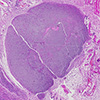| Jul 04, 2025 |
Scientists discovered that nanosilicates can help the body grow new blood vessels, which is essential for healing wounds and damaged tissues. This finding could lead to better treatments for injuries and faster recovery after surgeries.
|
|
(Nanowerk Spotlight) Researchers at Texas A&M University have discovered that tiny mineral particles, called nanosilicates, can help the body grow new blood vessels, which is essential for healing wounds and damaged tissues. This finding could lead to better treatments for injuries and faster recovery after surgeries.
|
|
When we get hurt, our body needs to build new blood vessels to bring oxygen and nutrients to the healing area. Without enough blood flow, wounds can take a long time to heal or may not heal properly. Scientists have been working to develop materials that can help speed up this process, but many current methods are expensive or not very effective.
|
|
In this study published in Science Advances (“Nanosilicates promote angiogenesis through activation of ROS-mediated WNT/β-catenin pathway”), the research team tested nanosilicates, which are very small particles made from minerals clay. These particles are so small that you would need a powerful microscope to see them. The researchers found that when these nanosilicates were mixed into a gel-like material and placed in the body, they helped new blood vessels grow faster and stronger.
|
 |
| This tissue section shows how a nanosilicate-infused hydrogel implant led to new small blood vessels forming within and around the material. The dark pink circular region marks the implant, while the surrounding lighter areas reveal host tissue infiltration and active vessel growth, highlighting the material’s ability to support angiogenesis during healing. (Image: Dr. Akhilesh Gaharwar, Texas A&M)
|
|
The scientists discovered that nanosilicates work by encouraging the body’s own cells to become more active. When the cells came into contact with the nanosilicates, they moved more quickly and began forming structures similar to small blood vessels. This is important because it means the body can start repairing itself sooner.
|
|
The team also learned that these tiny minerals turn on natural processes in the body that help build blood vessels. The nanosilicates triggered certain signals inside the cells, telling them to start making new vessel networks. In animal tests, the materials containing nanosilicates showed much better blood vessel growth compared to materials without them.
|
|
Dr. Akhilesh Gaharwar, who led the research, said this discovery is exciting because it uses the body’s natural ability to heal itself without needing extra growth factors or drugs, which can be expensive and sometimes have side effects.
|
|
“By adding nanosilicates to materials used in wound healing, we can help the body build blood vessels faster, which is essential for tissues to survive and heal properly,” Dr. Gaharwar explained.
|
One major advantage of nanosilicates is that they are made from minerals that are safe, natural, and affordable, making them easier to produce than other medical additives. This could make treatments more accessible and reduce healthcare costs in the future.
This new approach could be used not only for healing skin wounds but also for helping repair bones, treating burns, and improving materials used in surgeries or implants, where quick blood vessel growth is important for success.
|
The researchers hope that their work will inspire more studies into using natural materials like nanosilicates to create better medical treatments. Their goal is to design materials that work with the body to speed up healing in a safe and effective way.
This study shows that sometimes the smallest materials can make the biggest difference in medicine, offering hope for faster and better healing for patients in the future.
|
|
Source: Provided by Texas A&M University
|
|
|
|
|



